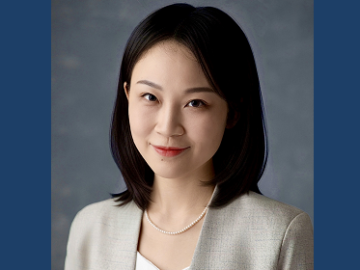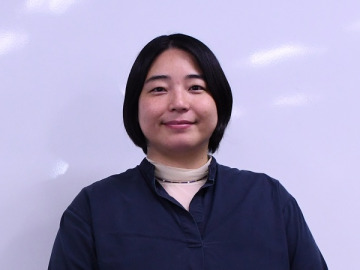- Shuntaro Mizuno, Assistant Professor (October, 2014)
How Inflation Occurred Is Still Unknown
My research focuses on the study of the cosmic inflation model.
It is thought that the universe was born in a fireball-like state with extreme heat and density, and then underwent a rapid, accelerated expansion. We call this accelerated expansion “inflation.”
In cosmology, we use the assumption that there was no particular location or direction in the dawn of the universe. However, in order for galaxies and stars to have been created, rather than expanding in a completely homogeneous state, the universe must have had locations with somewhat high or low densities in between. Inflation is a theory that explains how they were created. It is thought that, at the birth of the universe, there were quantum fluctuations, which were then rapidly magnified with inflation, forming the seeds of the present galaxies.
However, we do not know the details of particles and fields (inflaton) that would have been responsible for inflation. At present, over a hundred inflation models have been proposed, including one of mine. I also look into the models proposed by other researchers, and sometimes point out their weakness.
In the universe as it exists currently, the energy the universe radiated when it was a fireball flies about in the form of microwaves. We call this “cosmic microwave background (CMB).” As the fluctuations of the CMB reflect those of the dawn of the universe, the credibility of an inflation model is determined based on whether it explains the fluctuations of the CMB.
The CMB can be observed by satellites. Satellites have made observation technologies possible, and these technologies are advancing, including COBE launched in 1989, WMAP in 2002, and Planck in 2009, and so we now know the details of the fluctuations. Along with these technological advances, the validation of inflation models has also become more precise.

Figure 1: The observation results of the Planck satellite showing all-sky map temperature fluctuations. The blue parts indicate areas that are cooler than 2.73K by about one-hundred-thousandth of one degree, and the red parts indicate areas that are warmer than 2.73K by about one-hundred-thousandth of one degree.
Does Explaining the Mystery of Inflation Lead to Progress of Physical Theory?
If you hear the words “theoretical physicist,” you may think of the typical image of a person writing long equations and formulas on a blackboard. In fact, however, I often use a personal computer or large-scale computers to calculate how fluctuations are generated according to my model. I also read many publications, as ideas are very important in order to think of theories.
If the inflation models are varied, the resulting properties of fluctuations will differ slightly. The power spectrum is a measurement that can indicate the variations of fluctuation intensity by areas with different scales. Many of the inflation models that have been proposed previously consider the power spectrum at the end of inflation to have been almost flat. However, my model suggests that there might already have been some bumps and dents at that point in time.
It would be interesting if future observation results allow us to obtain data that support this model, which no one has ever proposed. In particular, with the follow-up report of the Planck satellite (first report released in 2013), the spectrum composition of the CMB may become available. I look forward to getting that information, as it may greatly help identify an inflation model.

Figure 2: Calculation results of the power spectrum according to the inflation model of Assistant Professor Mizuno. In the past report of the Planck satellite observation results, some data suggest the existence of bumps and dents in the spectrum. Follow-up reports or future observations may provide supporting evidence. (Courtesy of Assistant Professor Mizuno)
Furthermore, I think it would be interesting if an understanding of inflation could help develop another physical theory called “unification of interactions.” There are four types of forces in physical interactions: gravity, electromagnetic interaction, strong interaction, and weak interaction. There is already a theory that unifies the three interactions other than gravity, but there has not yet been a theory that unifies all four forces.
Superstring theory is a candidate for such a theory. Research into the property of fluctuations generated at the time of inflation may help us to understand the effects of superstring theory, which explains the mechanism of the birth of the universe. I hope that the model I have invented will help the development of other physical theories such as interactions.
The Universe—Not Easy to Understand, But Interesting
Prof. Katsuhiko Sato is a physicist who is famous worldwide for his research in cosmology. When I was a high school student, Prof. Sato visited our school festival to give a lecture, which motivated me to study cosmology.
Of course, my understanding at that time was limited compared to now, but I got the feeling that while the universe is not easy to understand, it is interesting.
I am also interested in history. When we study history, we look into the past events in the timeline. By looking further and further back in time, I came across questions such as, “How was the Earth formed?” and “How was the universe created?”
Belief That the Study of Cosmology Will Benefit People a Hundred Years from Now
Even if we discover the details of inflation models, our lives will not change significantly tomorrow. After all, what motivates me to continue my study is that there are things I want to understand. I imagine that when Newton and Einstein invented their theories, they aimed to explain phenomena that they simply wanted to understand, rather than thinking about what kind of theories they had to invent for the lives of the people.
The relationship between science and technology is mutually complementary. I think that the technology useful for humans is created through the application of scientific theories. I believe that my research in cosmology will help humans to better understand science.
Perhaps the current technology is not advanced enough to apply cosmology. Nevertheless, the theories used to study the universe will probably be useful in improving people’s lives some hundred years from now. I will continue believing in these positive outcomes as I work on my research.
Interview and Composition: Seiko Aoyama/Yuto Miyamoto
In cooperation with: Waseda University Graduate School of Political Science J-School











